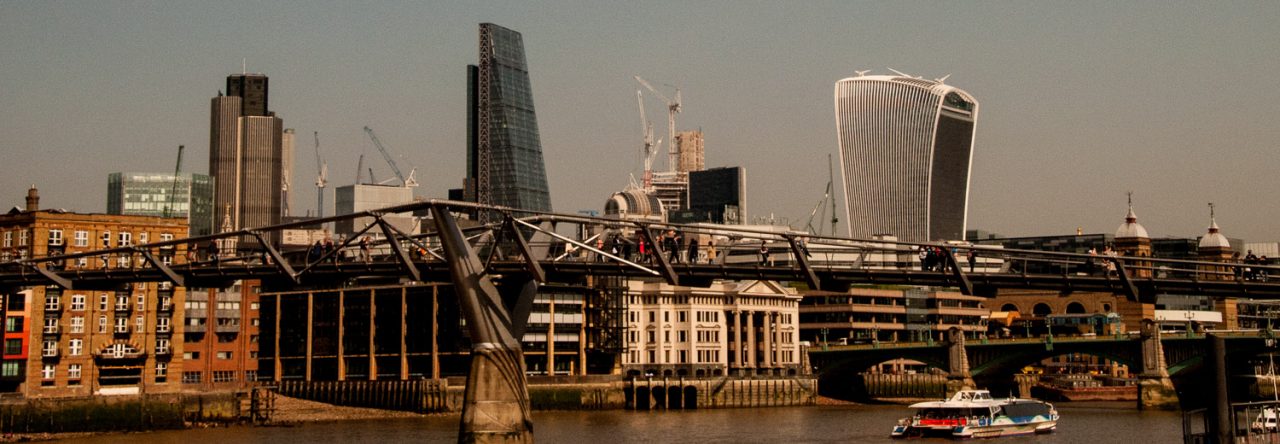Last week I said I would write more about the man commemorated on this plaque and the terrible event that prompted his bravery …

Here’s the memorial in close up …

It records the death of James Braidwood, Superintendent of the London Fire Brigade and reads : To the memory of James Braidwood, superintendent of the London Fire Brigade, who was killed near this spot in the execution of his duty at the great fire on 22nd June 1861.
The inscription is inside a laurel wreath in front of a burning building. A hose snakes from the building over the top of the wreath and coils up at the bottom right while over at the left rests a fireman’s helmet. The imagery includes a fire engine wheel and an axe.
The words on the flat support read as follows : A just man and one that feared god, of good report among all the nation.
Erected by the M. or Southwark Division of the Metropolitan Police.
(Beneath the support)
S. H. Gardiner, New Kent Road
The quote is from the Bible, Acts 10:22.
James Braidwood (1800–1861) …

If you had been in London on Saturday 22nd June 1861, you may well have been tempted to make your way, with thousands of other sightseers, to watch the Tooley Street Fire burn its way from Cotton’s Wharf, which was eventually destroyed, through to Hay’s and other wharfs and warehouses to Tooley Street shops.
Omnibuses were packed: ‘Men were struggling for places on them, offering three and four times the fare for standing room on the roofs, to cross London Bridge‘ and: ‘...every inch of room on London Bridge was crowded with thousands and thousands of excited faces’. Also reported: “Peripatetic vendors of ginger beer, fruit and other cheap refreshments abounded and were sold out half a dozen times over. Public houses, in defiance of Acts of Parliament kept open all night long, and did a roaring trade‘.
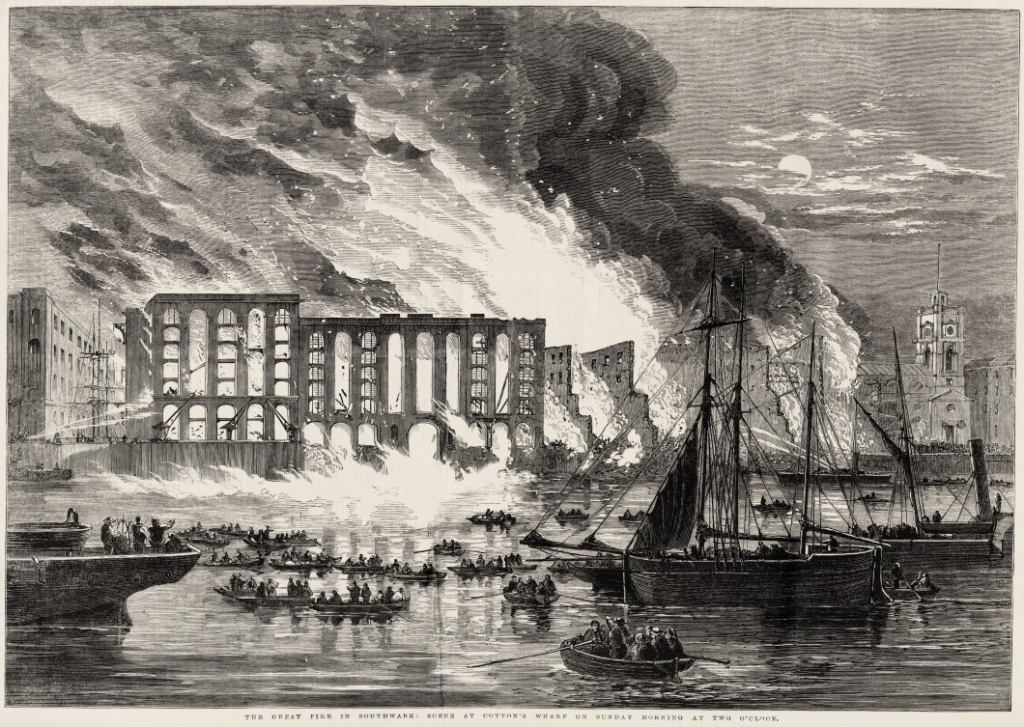
It is estimated some 30,000 spectators came from all over the city. By late evening the fire stretched from London Bridge to Custom House. Properties destroyed included offices, an American steamer, four sailing boats and many barges as ‘..burning oil and tallow poured in cascades from the wharfs and flowed out blazing on the river‘.
The following print from the time gives an impression of the scale and ferocity of the fire. The southern tip of London Bridge can just be seen on the right edge of the print …
Image credit: London Metropolitan Archives, City of London: catalogue ref: p5354642
The river is full of boats carrying spectators, and I suspect the watermen of the river found it very profitable to give people a close up view of the fire, although this could be dangerous. Look at the larger boat on the left edge of the print. A fire has started onboard and a figure is seen jumping into the river from the vessel.
The fire as viewed from Tooley Street …
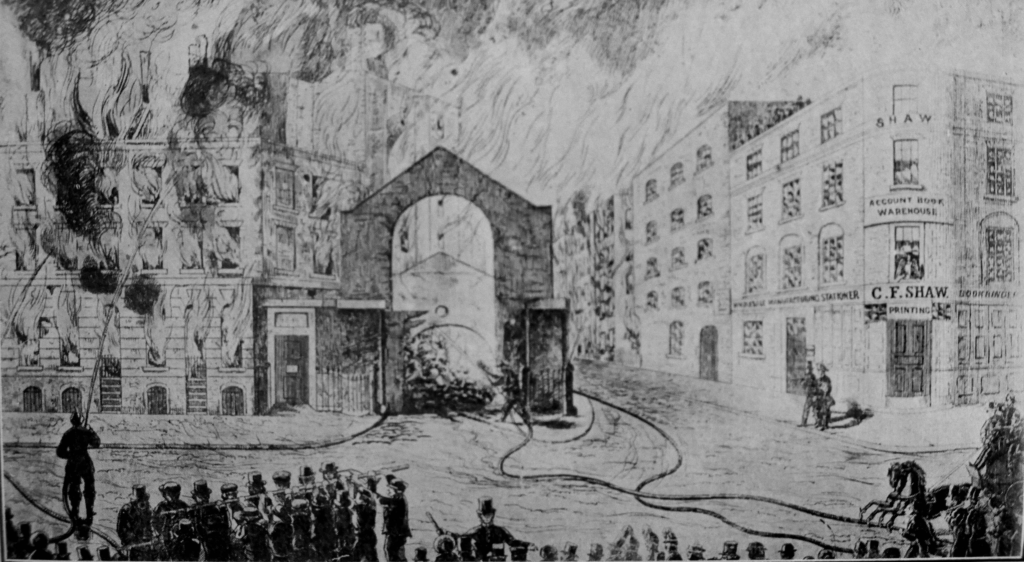
The memorial in Tooley Street records the name of the most high profile casualty – the Superintendent of the London Fire Brigade Mr James Braidwood. The jury at the inquest heard that he had been in among his fire fighters handing out brandy and encouragement when the wall fell on him, killing him instantly.
The following report details the circumstances of his death:
‘Mr Braidwood, who had visited the men several times, was engaged in giving them some refreshment, when, all of a sudden, a terrific explosion occurred. In an instant it was seen that the whole frontage of the second warehouse was coming down, falling outwards into the avenue. Mr Henderson, the foreman of the southern district of the brigade, who was standing within a few paces of Mr Braidwood, shouted for all to run. The men dropped their hose branches. Two, with Mr Henderson escaped by the front gateway, and the others ran in the opposite direction on to the wharf where they jumped into the river. Mr Braidwood made an effort to follow Mr Henderson, but was struck down by the upper part of the wall, and buried beneath some tons of brickwork. His death must have been instantaneous. Several of his men rushed to extricate him, hopeless as the task was, but another explosion happening, they were compelled to fly. The sad fate of their chief had a most depressing effect upon all, and, to add to their trouble, the conflagration now assumed a most awful ascendancy’.
His funeral procession …

James Braidwood was buried at Abney Park Cemetery on 29 June 1861.
He left a widow and six children. His wife had already suffered a similar bereavement as a son from a previous marriage had died fighting a fire in Blackfriars Road in 1855 and Braidwood was buried next to him. The funeral procession was almost a mile and a half in length and, as well as the London Fire Brigade, there were members of the City and Metropolitan Police forces, members of the remaining private fire-brigades, along with many prominent persons of mid Victorian London.
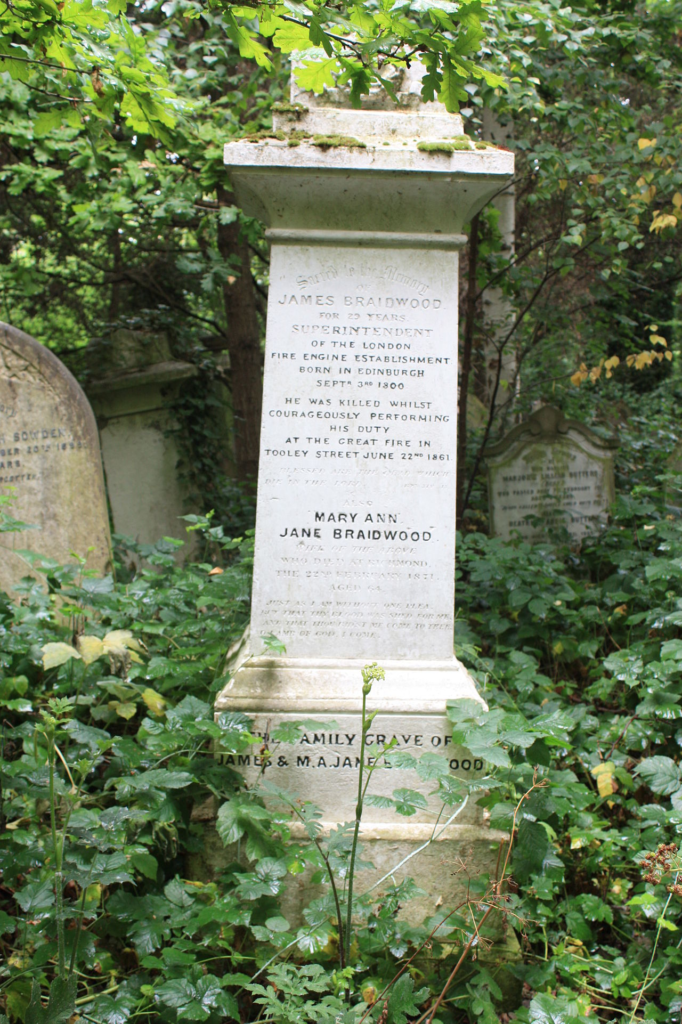
As a mark of respect, every church in the city rang its bells. The buttons and epaulets from his tunic were removed and were distributed to the firefighters of the The London Fire Engine Establishment.
Braidwood was a truly remarkable man whose thoughts about fire fighting and, most importantly, fire prevention were way ahead of his time. For example, fire spread quickly throughout the warehouses as the iron fire doors, which separated many of the storage rooms, had been left open. It is believed if they had been closed, as recommended by Braidwood, the fire may have burnt out, avoiding disaster.
I have found researching this episode in London’s history to be absolutely fascinating. If you find yourself in Tooley Street, glance up at the memorial to remember the Great Tooley Street Fire and the Superintendent of the London Fire Brigade, Mr James Braidwood.
Here are my sources – I hope you find browsing them interesting :
A London Inheritance (excellent as usual).
The London Fire Brigade website.
James Braidwood – Pioneer of Modern Firefighting.
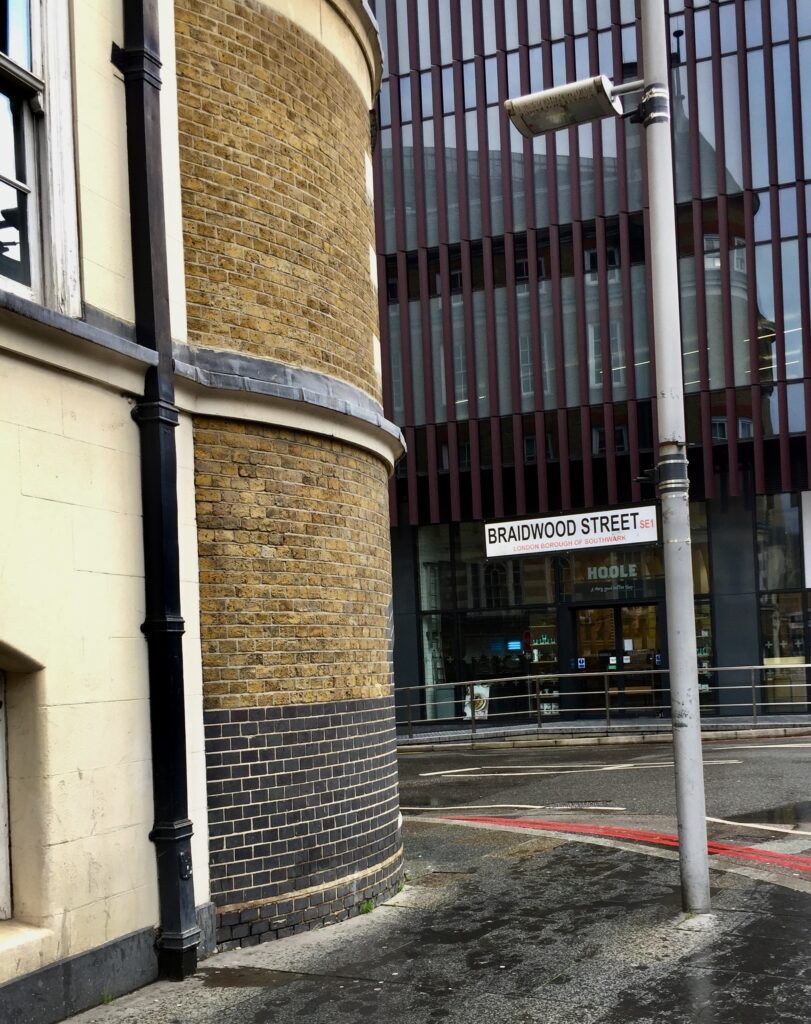
If you would like to follow me on Instagram here is the link …
